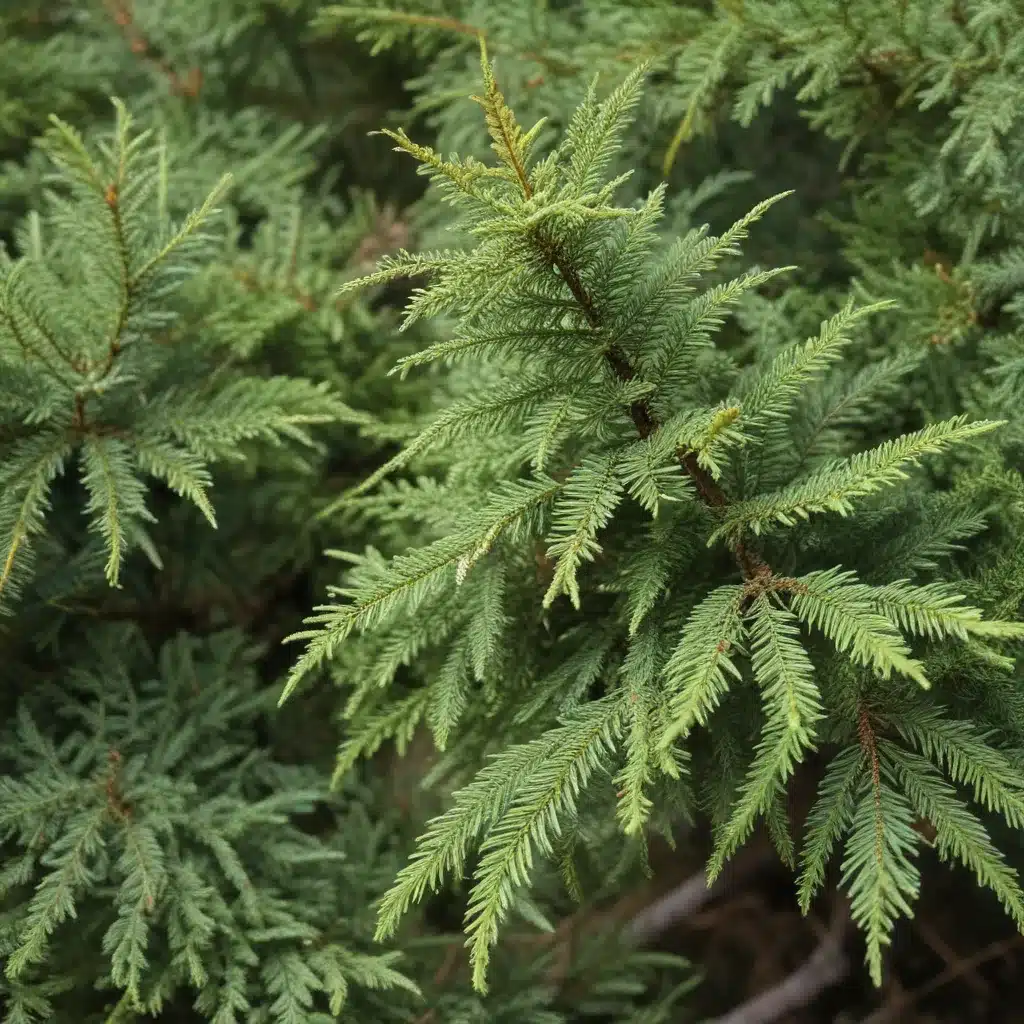
Exploring the Extraordinary Evergreens: A Spotlight on Conifers
The coniferous trees, often referred to as conifers, are a diverse and remarkable group of gymnosperms that have captivated the human imagination for centuries. These softwood giants, with their distinctive needle-like foliage and cone-bearing reproductive structures, are a vital component of many of the world’s most iconic ecosystems, from the boreal forests of the northern latitudes to the mountain strongholds that dot the global landscape.
The Diversity of Conifers
Conifers are a remarkably diverse group, encompassing over 600 species that span a vast array of forms, sizes, and adaptations. These needle-bearing trees, which include such renowned genera as Pinus (pines), Abies (firs), Picea (spruces), and Sequoia (redwoods), are the dominant vegetation in many of the planet’s most iconic biomes, from the towering temperate rainforests of the Pacific Northwest to the subarctic taiga that stretches across northern Eurasia and North America.
Coniferous Habitats
Conifers have evolved to thrive in a wide range of environmental conditions, occupying a diverse array of ecosystems. The boreal forests, also known as taiga, that stretch across the northern reaches of the globe are dominated by a handful of coniferous species, such as the ubiquitous Picea (spruce) and Pinus (pine), which have adapted to the long, harsh winters and short growing seasons of these high-latitude regions. In mountainous areas, conifers such as the majestic Abies (fir) and Tsuga (hemlock) are often the dominant vegetation, thriving in the cool, moist conditions and rocky terrain that characterize these elevated habitats.
Anatomy and Morphology of Conifers
Needle-like Leaves
One of the most distinctive features of conifers is their needle-like foliage, which is an adaptation that allows these plants to thrive in a variety of challenging environments. The narrow, evergreen leaves of conifers are designed to minimize water loss, with a thick, waxy cuticle and sunken stomata that help conserve precious moisture in arid or cold climates. Additionally, the needle-like shape of coniferous leaves reduces surface area, further enhancing their ability to retain water and withstand the rigors of their respective habitats.
Reproductive Structures
Conifers are also defined by their unique reproductive structures, which take the form of cones. These woody, scaly structures house the seeds of the plant, which are released when the cone opens, allowing the wind to disperse them far and wide. The cones of conifers come in a wide range of shapes and sizes, from the diminutive Picea (spruce) cones to the massive, barrel-shaped Sequoia (redwood) cones, each adapted to the specific needs of the species and its environment.
Ecological Significance of Conifers
Carbon Sequestration
Conifers play a vital role in the global ecosystem, acting as carbon sinks and helping to mitigate the effects of climate change. The dense, woody biomass of coniferous trees allows them to absorb and store vast quantities of atmospheric carbon dioxide, which they then incorporate into their tissues as they grow. This ability to sequester carbon makes conifers an invaluable asset in the fight against the devastating impacts of a warming planet.
Wildlife Habitat
In addition to their importance in the global carbon cycle, conifers also provide essential habitat for a wide range of wildlife species. The dense, evergreen foliage of these trees offers shelter and nesting sites for numerous birds and small mammals, while the cone-bearing reproductive structures provide a crucial food source for many species, including squirrels, bears, and various avian inhabitants. By supporting a diverse array of biodiversity, conifers contribute to the overall health and resilience of the ecosystems in which they are found.
Economic and Cultural Importance
Timber and Wood Products
Conifers have long been a valuable economic resource, with their softwood lumber used extensively in the construction of homes, furniture, and a wide range of other products. The straight-grained, easily-workable nature of coniferous wood has made it a popular choice for builders and craftspeople throughout history, and the industry surrounding the harvesting and processing of coniferous timber continues to be a major economic driver in many regions.
Traditional and Medicinal Uses
In addition to their commercial value, conifers have also played a significant role in the cultural and medicinal traditions of many societies. The evergreen foliage and cone-bearing reproductive structures of these trees have been incorporated into various religious and cultural practices, from the use of pine boughs in holiday decorations to the incorporation of cedar and juniper into traditional herbal remedies. The rich history and diverse applications of conifers have cemented their place as an integral part of the human experience, both past and present.
Threats and Conservation
Deforestation and Habitat Loss
Despite their ecological and cultural significance, conifers are not immune to the threats posed by human activity. Deforestation and the conversion of coniferous habitats to other land uses, such as agriculture and urban development, have led to the fragmentation and degradation of many coniferous ecosystems around the world. This habitat loss has had a devastating impact on the biodiversity that relies on these softwood giants, and has prompted a renewed focus on the importance of sustainable forest management and conservation efforts.
Climate Change Impacts
In addition to the threat of deforestation, conifers are also facing the looming challenge of climate change. The shifting temperature and precipitation patterns associated with a warming planet have the potential to disrupt the delicate ecological balance that sustains many coniferous ecosystems, potentially leading to the die-off of certain coniferous species and the encroachment of more heat-tolerant vegetation. As such, adaptive strategies and conservation measures aimed at bolstering the resilience of coniferous forests have become increasingly important in the face of this global environmental threat.
Explore the extraordinary world of conifers with the experts at TriCounty Tree Care, where we are dedicated to the preservation and responsible management of these softwood giants that are so vital to the health and well-being of our shared ecosystems.


